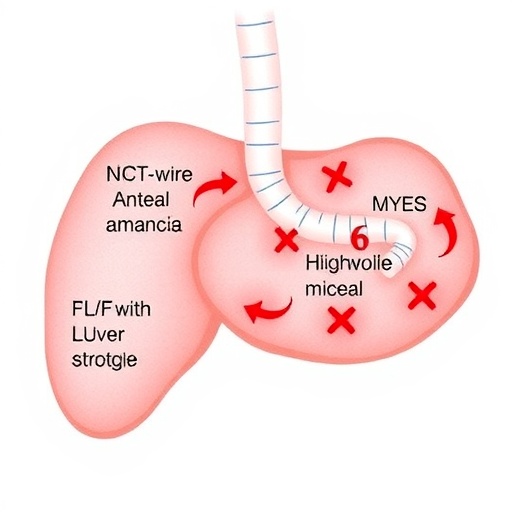A groundbreaking study from Duke University has upended long-held assumptions about the origins of small cell lung cancer (SCLC), one of the deadliest forms of lung cancer predominantly linked to smoking. For decades, the prevailing consensus was that SCLC originates in neuroendocrine cells, highly specialized lung cells once thought to be the disease’s primary source. However, this new research reveals that SCLC more likely begins in basal stem-like cells, a discovery that redefines our understanding of the tumor’s cellular genesis and opens novel pathways for early intervention and targeted therapies.
Published in the prestigious journal Nature, the study meticulously delineates how basal cells—lung cells endowed with regenerative capabilities to differentiate into various lung cell types—serve as the progenitors for SCLC tumors. These tumors can manifest not only in the classic neuroendocrine phenotype but also in a more elusive and aggressive tuft-like subtype. The latter form of SCLC, notorious for evading current treatment regimens and leading to poor patient prognoses, has long frustrated oncologists due to its resilience and adaptability.
This revelation draws from a sophisticated array of experimental techniques. Using genetically engineered mouse models, researchers were able to manipulate specific genetic alterations in basal cells but not in neuroendocrine cells, observing that only basal cell mutations gave rise to the tuft-like tumors. This pivotal finding contradicts the traditional paradigm and paints a more nuanced picture of SCLC’s cellular origins, suggesting that the disease’s heterogeneity arises from basal cells’ inherent plasticity.
One of the innovative methodologies deployed in this research was lineage barcoding, a cutting-edge technique that tags individual cells with unique genetic markers. This ingenious approach allows scientists to trace the lineage and fate of cells through various stages of tumor evolution with exquisite resolution. Through this lens, the team uncovered that small cell lung cancer cells exhibit profound cell fate plasticity—a dynamic ability to “shapeshift” between different cellular states—which underpins the tumor’s notorious treatment resistance and aggressive progression.
This plasticity, the ability of a cancer cell to transition between neuroendocrine and tuft-like phenotypes, not only complicates clinical management but also reveals vulnerabilities that were previously unrecognized. Understanding how basal cells give rise to these divergent tumor lineages grants researchers a more precise map of the disease’s evolutionary trajectories, illuminating potential molecular and cellular checkpoints ripe for therapeutic targeting.
Another hallmark accomplishment of the study was assembling the largest available dataset of human SCLC tumors, comprising nearly 944 samples. This expansive dataset provided a robust platform for comparative genomic and cellular analyses, enabling the research team to validate their experimental findings in clinically relevant human specimens. Data from this extensive collection confirmed that genetic alterations inducing tuft-like tumors were exclusive to basal cells, reinforcing the basal cell origin hypothesis beyond model systems.
The implications of this study resonate deeply in the clinical arena. The identification of basal cells as the source of not only classic but also the treatment-resistant tuft-like forms of SCLC allows for the development of more representative preclinical models. These models are the first to recapitulate the full complexity of SCLC heterogeneity and resistance, offering invaluable tools for testing new therapies that could intercept the disease at its earliest, most vulnerable stages.
Beyond the laboratory models, this foundational knowledge empowers researchers to explore interactions between the basal cells and the immune system during the incipient phases of tumorigenesis. By deciphering how these cells evade immune surveillance before full malignancy, scientists can begin to design innovative immunotherapeutic strategies aimed at preventing tumor establishment altogether. This preventive approach marks a paradigm shift from treating established tumors to halting their emergence.
The study’s senior author, Dr. Trudy G. Oliver, professor at Duke University School of Medicine’s Department of Pharmacology and Cancer Biology, emphasizes the study’s transformative nature. According to Dr. Oliver, the models developed in this research, for the first time, truly reflect the diversity and complexity of small cell lung cancer. This allows scientists to probe the intricacies of tumor biology and test interventions against the most lethal tumor subtypes, particularly the tuft-like form that has defied effective treatments thus far.
Leading the front lines of this investigation, Abbie S. Ireland, a graduate student in Molecular Cancer Biology at Duke, describes the cell fate plasticity phenomenon as a key mechanism enabling SCLC’s resilience. Ireland highlights that the dynamic ability of cancer cells to shift states provides fresh insight into why the disease so readily develops resistance to standard therapies and how new pharmacological strategies might be designed to block this transition.
This discovery not only transforms our understanding of lung cancer biology but also redefines how future research and drug development efforts should be aligned. Targeting basal cells and their plasticity could potentially intercept small cell lung cancer before it adopts its most aggressive and untreatable form. Moreover, such targeted early interventions may significantly improve overall survival rates among patients afflicted with this devastating disease.
Collaborative efforts underpinning this research included a diverse team of experts and utilized cutting-edge technologies integrating genetics, cellular biology, and computational analyses. The study was supported by notable funding from the National Cancer Institute, the Duke Science and Technology Scholar initiative, and other prominent grants, enabling comprehensive exploration across experimental models and human clinical specimens.
The urgency of this advancement cannot be overstated, given SCLC’s aggressive progression and the historically limited efficacy of current treatment options. By shifting the focus toward basal stem-like cells as the origin of tumor heterogeneity, this research heralds a new era in understanding lung cancer’s earliest molecular events and offers a hopeful roadmap for therapeutic innovation.
As scientists build upon this foundational work, the prospect of developing early detection techniques and basal cell-targeted therapies grows ever more tangible. With continued multidisciplinary investigation, the scientific community moves closer to mitigating the devastating impact of small cell lung cancer, transforming it from a near-certain fatal diagnosis into a manageable, and potentially preventable, disease.
Subject of Research: Small cell lung cancer cellular origins and tumor lineage plasticity
Article Title: Basal cell of origin resolves neuroendocrine–tuft lineage plasticity in cancer
News Publication Date: 17-Sep-2025
Web References: https://www.nature.com/articles/s41586-025-09503-z
References: Research published in Nature, supported by National Cancer Institute grants (R01CA262134, U24CA213274, U01CA231844, among others) and the Duke Science and Technology Scholar initiative.
Keywords: Small cell lung cancer, basal cells, neuroendocrine cells, lineage plasticity, tumor heterogeneity, tuft-like tumors, cancer stem cells, lung cancer origins, cell fate plasticity, genetically engineered mouse models, lineage barcoding, immunotherapy
Tags: aggressive tuft-like subtype SCLCbasal stem-like cells in cancerDuke University lung cancer studyearly intervention in SCLCexperimental techniques in oncologygenetic alterations in cancer researchneuroendocrine cells and SCLCregenerative capabilities of lung cellssmall cell lung cancer originssmoking-related lung cancer researchtargeted therapies for lung cancerunderstanding tumor cellular genesis





